Sigma 17-50 mm f/2.8 EX DC OS HSM
3. Build quality
The following picture shows the Sigma 17-50 mm OS positioned between the Sigma 17-70 mm and the Sigma 1.4/30.
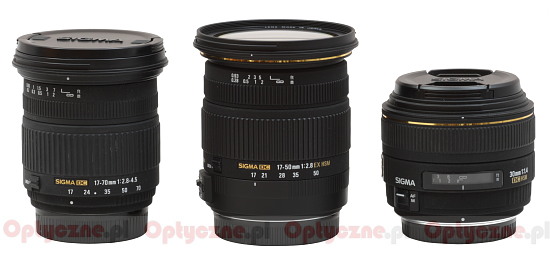 |
Please Support UsIf you enjoy our reviews and articles, and you want us to continue our work please, support our website by donating through PayPal. The funds are going to be used for paying our editorial team, renting servers, and equipping our testing studio; only that way we will be able to continue providing you interesting content for free. |
- - - - - - - - - - - - - - - - - - - - - - - - - - - - - - - - - - - - - - - - - - - - - - - -
The Sigma 17–50 mm f/2.8 EX DC OS HSM belongs to the high-end series, marked by the EX symbol. It starts with a metal mount inside which you see the rear element with a diameter of 27 mm. It is placed at the level of the mount for the 17 mm focal length and it collapses over two centimeters inside when you pass to the focal length of 50 mm. What’s strange, it reveals the whole electronics – you can admire it looking sideways…
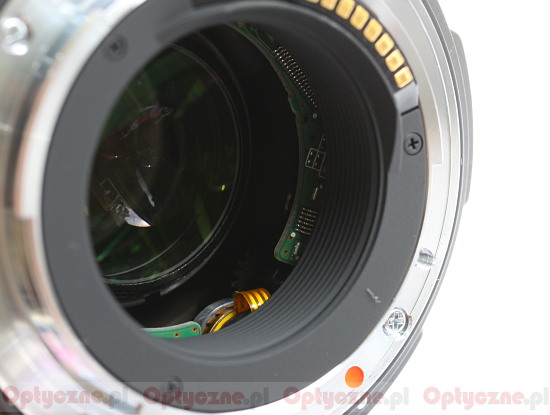 |
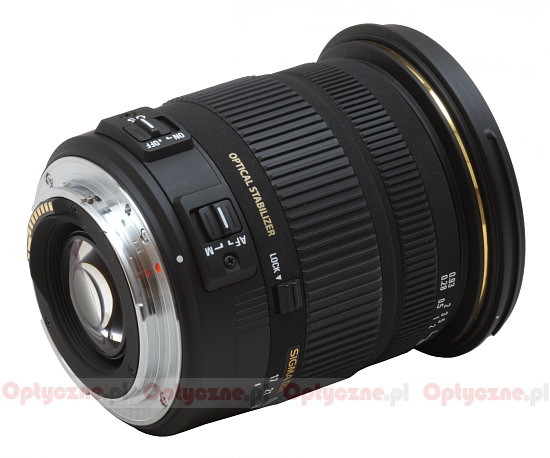 |
Immediately behind the mount, already on the barrel and to the left, you find two switches. The first of them – AF/M – is for changing the focus mode. The next, marked with OS ON/OFF symbols, helps switching on and off the optical stabilization. Even further there is the LOCK switch, used to block the lens in a folded position at 17 mm. We didn’t use it during the test even once, though, because the folded lens doesn’t let the front element system extend even if you bend it and shake quite strongly.
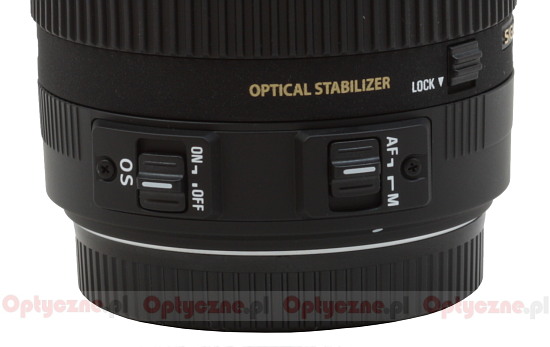 |
The LOCK switch is situated on a zoom ring 3.5 centimeters wide. There are also focal length markings on it for the values of 17, 21, 28, 35 and 50 mm and above them you can find a 21 mm wide ribbed area. The ring is comfortable to work with – it is well-damped although in the range of 17-28 mm minimally less so than in the range of 28-50 mm.
Further on, there is a manual focus ring. Here we must complain a little bit. For such a quality-price segment we would expect a big, comfortable, wide-ranging ring which would allow you to correct manually the focus with great precision even if you work in the AF mode; we would also like to have a distance scale behind a window. You can’t find these features in the Sigma 17-50 mm OS, though. The ring is relatively narrow, only 2 cm in width, and the ribbed area takes just one centimeter. The distance scale in feet and meters is situated on the ring. You can change its position in the MF mode only and running through the whole scale takes about a 45-degree turn. In some situations it’s not enough to guarantee the necessary level of precision.
As a result the Sigma 17-50 mm OS, which is supposed to compete with such expensive devices as the Canon 17–55 mm f/2.8 or the Nikkor 17–55 mm f/2.8, can be only compared here to the much cheaper Sigma 17-70 mm. In a lower segment such structural shortcuts are appropriate but when you deal with a high-end segment they are rather unbecoming; the Sigma lags behind its brand name competitors at the very beginning.
Behind the manual focus ring you can find a front element system with a relatively flat front element which is 62 mm in diameter, surrounded by a non-rotating filter thread, 77 mm in diameter. On passing to 50 mm focal length the front element system extends so the dimensions of the lens increase to 11.5 cm.
The lens, tested here, consists of 17 elements in 13 groups. According to its producer two elements of the new low-dispersion FLD („F” Low Dispersion) kind, which performance is similar to fluorite, two elements produced in the “Glass Mold” technology and one hybrid spherical element will assure a perfect correction of all types of aberrations. All the optical elements were covered by anti-reflection multi-coatings. Inside there’s also an aperture with seven diaphragm blades which can be closed down to f/22.
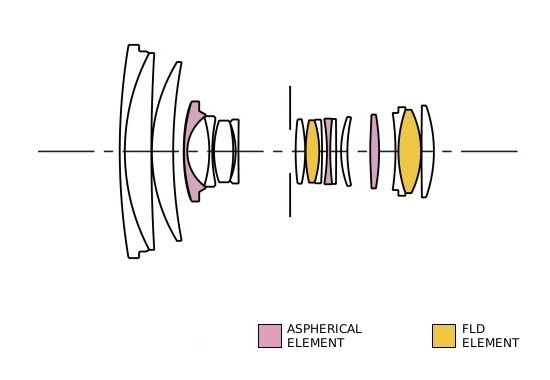 |
As usually in the case of the EX series we get a very generous selection of accessories included in box. The buyer will get both caps, a petal shape lens hood and a stylish, fabric hard case.
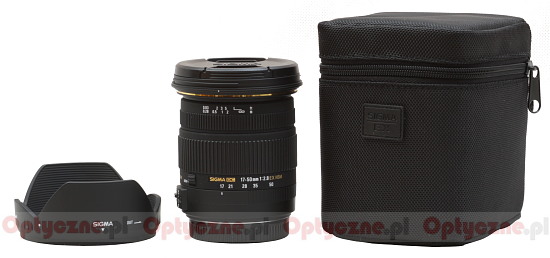 |
Stabilization
According to the producer the new Sigma 17–50 mm f/2.8 OS is equipped with the newest optical stabilization mechanism (OS), which is supposed to work with 4 EV efficiency. Such efficiency level is declared for all Sigma lenses with stabilization. Our tests, though, show that in the first OS models the efficiency of the stabilization reached about 2 EV and in the newest construction it increased to nearly 3 EV.
The stabilization efficiency test we conducted at 50 mm focal length, taking several dozen photos at every exposure time in the range from 1/60 to 1/3 of a second with the stabilization on and off. Then, for every series of photos taken at a given time we calculated the percentage of fuzzy pictures and drew an exposure time function graph, expressed in EV. In this case 0 EV corresponds to the time of 1/50 of a second. The results are presented on the graph below.
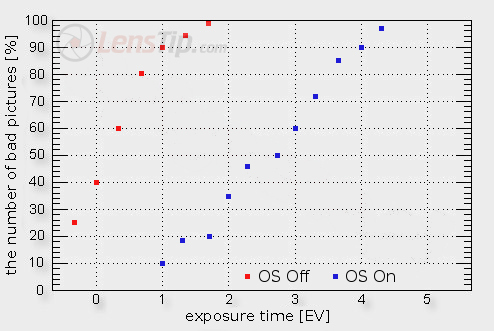
As you see the maximum distance between two curves reaches 3 EV so exactly this value we think presents the optical stabilization efficiency of the tested Sigma model.






